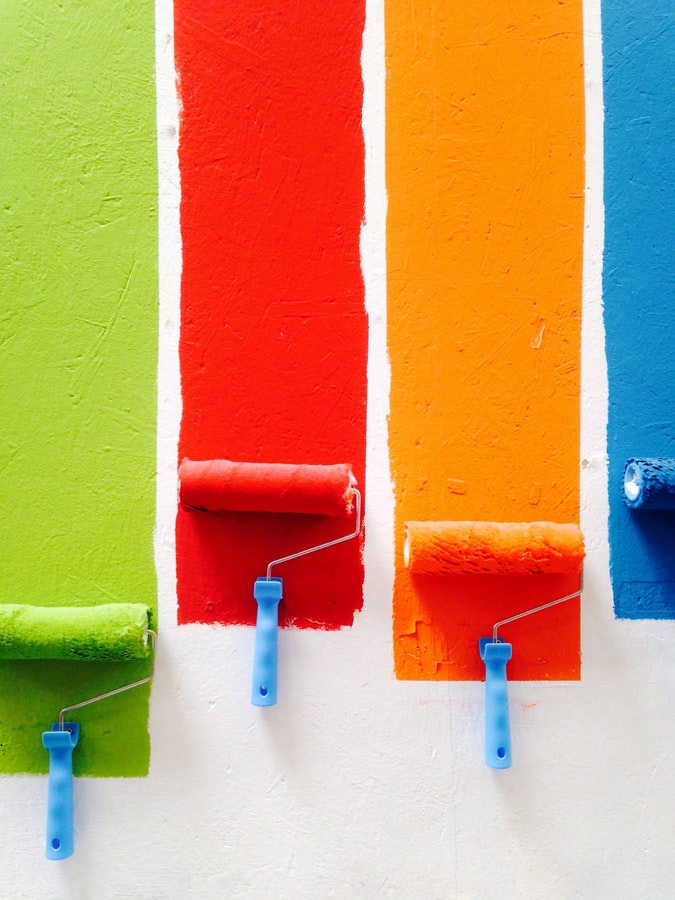
How To Prepare Your Bedroom Wall For Painting
It’s amazing how many people fail to prepare properly when it comes to decorating and painting, but it’s an essential stage to complete if you want to save time and money in the long run.
Choose your colours
This can sometimes be the hardest step in the entire process! Use a colour guide to help you if you’re unsure of what will work together.
Consider the size of the room, including the height of the ceiling and the amount of natural light the rooms receives. All of these features can impact on the overall result of the room. For example, if you have a small, dark room with low ceilings you might consider using lighter pastel shades to make the room seem lighter and larger.
Top Tip: Do use sample paints – the colours will always differ slightly from the picture on the can.

Choose your finish
There are three main types of paint finishes: matt, satin and gloss.
- Matt finishes are the standard finish, which has a duller, rougher finish when dried.
- A satin or eggshell finish are better suited for children’s rooms, as they are easy to clean with just a damp cloth.
- Gloss finishes are typically used for furniture and woodwork. Gloss paint when dried produces a gleaming effect which is slightly ‘shiny’.
Clear the room
It is easier to paint an empty room, but if this isn’t possible then you will definitely want to open the window and cover all the furniture.
Fill in any holes, dents and cracks
Small holes and cracks can easily be filled with a lightweight filler purchased from your local DIY/Home Improvement store. You’ll find that the majority of staff are extremely helpful and can talk you through the process if you’re slightly unsure.
For larger holes, I’d recommend this How to Fix a Hole in the Wall guide, which has step-by-step instructions with accompanying photos.
Remember to let the filled hole dry thoroughly before moving on to the next stage of preparation.
Smooth the surface
Scrape off any flaking paint and use sandpaper to smooth out any uneven surfaces, including any holes or cracks you have filled in.
If you are planning on repainting wooden door frames and skirting, and do not want to completely strip the old paint off, use a quick rub of sandpaper to ‘roughen’ the surface (this is especially important if the old paint is a gloss). This will make it easier to apply the new layer of paint.
Clean the walls
You’d be surprised at just how much residue and dust can build up on the surface of your walls. A simple wipe down with a soapy solution will allow you ensure the walls are clear before you start painting.
Tape edges
Use masking tape to protect any edges from paint and/or to produce a nice, clean edge. This includes ceilings, skirting, door frames and plug sockets.
Yes, there’s even a special technique for doing this properly too. Check out this guide if you want professional results.
Prime the walls
This is especially important if you are painting over oil-based or gloss paints.
Primer not only ensures a lasting finish, but it also helps you to save time, as less additional coats of paint will be needed.
Tinted primer will improve the colour of your paint, but I would advise testing beforehand to ensure it doesn’t change the end result too much!
You should always prime any areas that you have filled in to prevent them from showing up ‘shiny’.
Painting Technique
Start in the corners of the wall, near the ceiling. You should pain at at angle to avoid brush marks.
You might need a couple of layers to effectively paint over the old colour and to avoid brush marks.
So, now that you’ve read this, you might have changed your mind about painting altogether!
Latest Blog Posts

Best Beds for Small Rooms: Maximise Your Space
Posted on 27/06/2025
Should You Wash Coverless Duvets?
Posted on 28/05/2025
King vs Super King: Do You Really Need the Extra 30 cm?
Posted on 23/04/2025
7 Tips To Create The Perfect Princess Bedroom
Posted on 14/03/2025